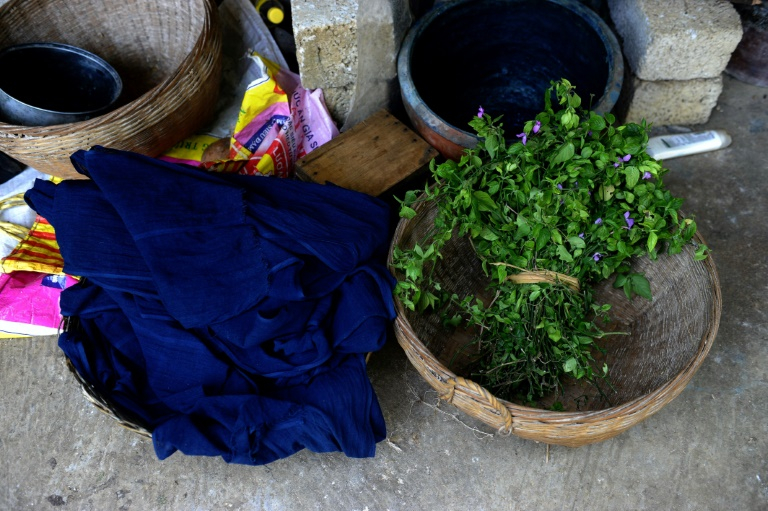
Image: AFP/Hoang Dinh Nam
They can be tight, flared, ripped at the knee. Jeans come in all styles and colors these days, but one hue will always be synonymous with the world’s favorite garment: indigo blue.
To satisfy the world’s seemingly insatiable demand for blue denim, more than 45,000 tons of indigo dye are produced every year, with much of the waste making its way into rivers and streams, conservationists say.
On Monday, scientists announced they had developed a greener method to produce the coveted tint: using lab-grown bacteria.
While not yet commercially viable, the technique holds promise for a “much-needed update to the historic, but unsustainable, indigo dyeing process,” researchers wrote in the journal Nature Chemical Biology.
“Demand for the dye is higher than ever before, making its ecological consequences unsustainable,” they warned.
Originally extracted from plants, indigo is one of the oldest dyes, with evidence of its use in textile coloring going back some 6,000 years.
It is prized for being vibrant and long-lasting, and was an important cash crop until humans started making synthetic indigo in the early 1900s.
Indigo crystals cling easily to the cotton fibres used in jeans and are resistant to laundry detergents, yet flake off slightly with wear-and-tear to yield the sought-after worn-in look.
Some four billion denim garments are produced every year, the vast majority indigo-tinted, said the study authors, and warned of “a serious sustainability problem.”
The first danger: producing indigo dye requires the use of toxic chemicals such as formaldehyde and hydrogen cyanide.
Furthermore, synthesised indigo is insoluble in water, meaning chemicals are needed to make it suitable for dyeing.
‘Not currently feasible’
One such chemical is sodium dithionite, which decomposes into sulfate and sulfite which can corrode equipment and pipes in dye mills and wastewater treatment plants.
“Many dye mills avoid the additional cost of wastewater treatment by dumping the spent dye materials into rivers, where they have negative ecological impacts,” said the research team.
The new method mimics the workings of the Japanese plant Persicaria tinctoria.
Instead of a plant, “we engineered a common lab strain of Escherichia coli, a bacteria found in our gut, to be a chemical factory for the production of indigo dye,” study co-author John Dueber of the University of California’s bioengineering department told AFP.
Like the plant, the bacteria produces a compound called indoxyl, which is insoluble and cannot be used as a dye. By adding a sugar molecule, the indoxyl is turned into indican, a precursor of indigo.
Indican can be stored and transformed into indigo directly on the cloth when dyeing, by adding an enzyme to the mix. The lab is working to make the process commercially feasible, Dueber said.
For now, producing five gram of indigo to color one pair of jeans would require “several liters of bacteria,” he said, and would be more expensive. JB
RELATED STORIES:
LOOK: Naturally pink chocolate from Ruby cocoa bean unveiled
15 Ways you can ring in 2018 with the Pantone Color of the Year